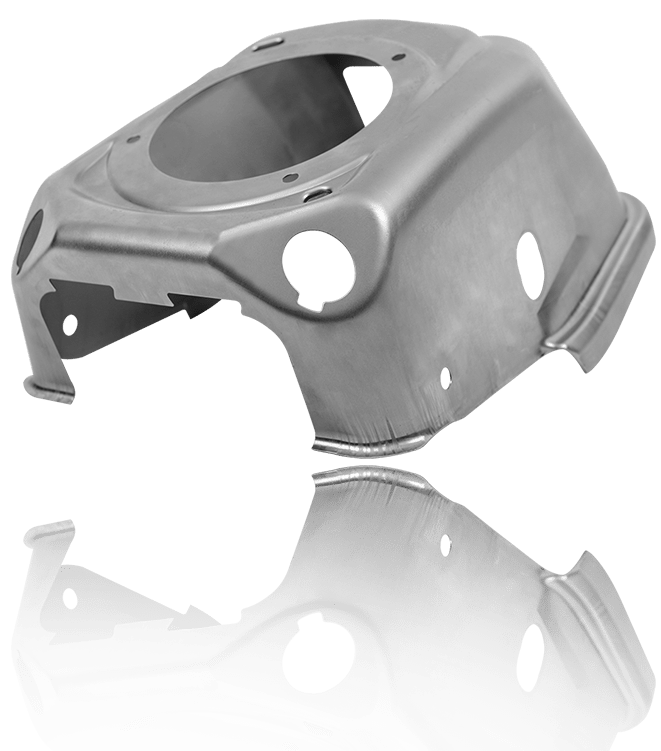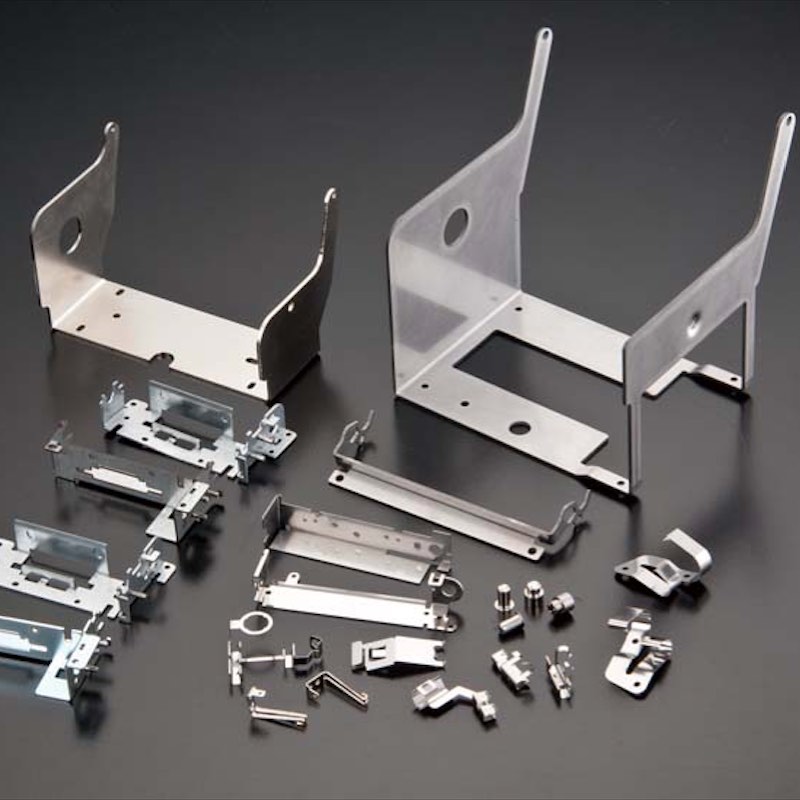The Development of Metal Marking Procedures: Innovations and Applications
The world of steel marking processes has actually observed a transformative trip noted by consistent advancement and adaptation to satisfy the demands of modern commercial methods. From the traditional approaches deeply rooted in history to the sophisticated innovations driving high-speed precision, the evolution of steel stamping has been nothing except amazing. As new tooling methods and automation discover their method right into this sector, the ramifications for effectiveness and top quality are profound. The applications cover throughout a spectrum of markets, each profiting distinctly from the advancements in steel stamping procedures.
Conventional Steel Marking Strategies
Standard metal stamping techniques have long been the foundation of manufacturing procedures in different industries as a result of their efficiency and precision. The process includes developing a steel sheet or coil right into a preferred shape by pushing it between a die and a punch. This method is commonly utilized for producing huge quantities of components with high accuracy at a fast pace.
Among the crucial benefits of standard steel stamping techniques is the ability to keep tight resistances, guaranteeing that each component meets the required requirements regularly. This degree of accuracy is important in sectors such as vehicle, aerospace, and electronics, where even small inconsistencies can result in significant concerns.
Moreover, traditional metal stamping strategies use cost-effective options for automation compared to other making techniques. The capability to mark components in quick succession lessens production time and decreases labor prices, making it an eye-catching option for services seeking to optimize their manufacturing procedures.
Emergence of High-Speed Stamping

One of the crucial advantages of high-speed stamping is its capacity to preserve accuracy and uniformity even at accelerated handling rates. This accuracy is crucial in industries where limited resistances and detailed styles are needed. In addition, high-speed marking enables the processing of a variety of products, including aluminum, stainless steel, and copper, further broadening its applicability across different markets.
Furthermore, the introduction of high-speed marking has made it possible for producers to fulfill the expanding need for complex components in sectors such as auto, aerospace, and electronic devices (Metal Stamping). By leveraging the rate and precision of high-speed stamping technology, business can boost their competition in a rapidly advancing market landscape
Improvements in Tooling Innovation
With the evolution of high-speed marking making it possible for enhanced accuracy and effectiveness in metal developing procedures, the field of steel marking has actually seen significant improvements in tooling technology. Tooling modern technology plays an important function in steel stamping procedures, influencing factors such as item top quality, manufacturing rate, and Check Out Your URL total cost-effectiveness. One vital innovation in tooling innovation is the advancement of intelligent tooling systems that include sensors and keeping track of devices to give real-time data on the marking procedure. These systems can spot concerns such as device wear or misalignment, permitting for immediate modifications to preserve ideal efficiency.
By using these advanced products, tooling manufacturers can create dies and molds that stand up to the high pressures and temperature levels entailed in steel marking procedures, resulting in longer device life and improved production effectiveness. In general, these developments in tooling technology have actually transformed the steel marking sector, allowing manufacturers to attain higher levels of precision, performance, and cost savings.
Assimilation of Automation in Stamping
As automation remains to improve the landscape of metal marking procedures, the assimilation of automated systems has become increasingly common in contemporary production facilities. Automated systems provide many benefits in metal stamping, including enhanced efficiency, enhanced precision, and enhanced safety. By Clicking Here incorporating automation right into stamping procedures, makers can lower cycle times, minimize product waste, and maximize manufacturing throughput.
Among the key components of automation in stamping is making use of robotic arms for tasks such as product handling, component control, and quality evaluation (Metal Stamping). These robot systems can do repetitive and labor-intensive tasks with rate and accuracy, maximizing human drivers to focus on more intricate procedures. In addition, automation enables for real-time tracking and modification of stamping procedures, leading to higher total procedure control and high quality assurance
In addition, the combination of automation in marking allows suppliers to attain consistent part high quality, meet tight tolerances, and enhance general efficiency. As modern technology remains to advancement, the duty of automation in metal marking procedures is anticipated to increase further, driving technology and performance in the manufacturing industry.
Applications Throughout Diverse Industries
Incorporating metal stamping processes throughout varied sectors showcases the versatility and adaptability of this production method. From automotive to aerospace, electronics to clinical tools, steel marking plays a critical function in the production of a large range of parts. In the automobile industry, steel stamping is utilized to develop intricate components such as body panels, framework components, and engine get rid of high precision and performance. The aerospace sector counts on steel stamping for producing light-weight yet durable parts for airplane and spacecraft. In the electronics industry, steel click over here marking is necessary for producing ports, calls, and other little get rid of limited resistances. Clinical device makers make use of steel marking for creating accurate elements like medical instruments and implants. Additionally, the home appliance sector advantages from steel marking procedures to manufacture components for fridges, washing equipments, and various other household appliances. The flexibility of metal stamping procedures makes it a beneficial manufacturing strategy throughout different industries, showing its significance in modern production processes.
Conclusion
